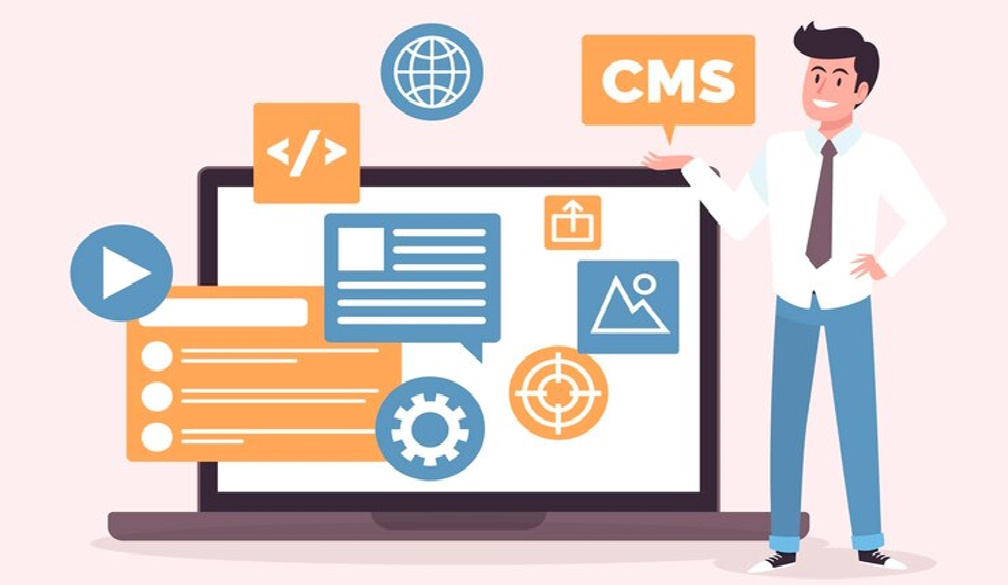The Role of CDNs in Enhancing Headless CMS Performance and Reliability

A headless CMS provides businesses with the ultimate freedom for content management and output possibilities across any number of channels. However, when the infrastructure is not ideal, content can load slowly, improperly, or with reliability issues especially when the anticipated audience is global. Enter the Content Delivery Network (CDN), which not only provides increased speed, performance, and uptime for a headless CMS but also increases the global potential of any project. A CDN uses multiple networks of linked servers around the world to ensure that loading content will always be coming from the nearest server location to the user helping to reduce latency issues and improve overall site operation.
Because the content rendered from a headless CMS is rendered in real-time via APIs, it needs to be optimized properly. A CDN is that solution for a headless CMS to ensure that it can cache, store, and serve content properly and keep consistent best practices with its additional layer of performance enhancement and delivery for developers and users alike.
Reducing Latency and Improving Load Times with CDN Caching
Latency is one of the most significant problems with web and application performance. When a user attempts to retrieve content from your site, for instance, they have to communicate with a centralized server first. The server then needs to go to the location where information is stored and send it back to the user's browser. The longer and farther the centralized server is from where the user is accessing the site, the longer this process will take. Thus, there will be lagging responses and annoying delays before a user can even interact with your content. With tools like Next Preview, developers can simulate real-time rendering and test performance optimizations in advance, reducing latency and ensuring a smoother, faster content experience for the end user.
A CDN minimizes latency by caching content on edge servers located around the globe so that users can retrieve content from the nearest data center instead of from miles and miles away from the origin server. This allows for a quicker request and rendering of webpages.
For example, an online store running on a headless CMS that contains thousands of product images, details, and videos can take advantage of a CDN to serve these assets almost instantaneously from cached locations. Instead of having to fetch a 2MB product image from a central origin server halfway around the world every time a user opens a product page, a CDN serves it up instantaneously from a cached location. This promotes excellent load times and maintains a seamless shopping experience even during high-traffic times for Black Friday and summer sales.
Ensuring High Availability and Reliability with CDN Redundancy
Downtime is problematic for any digital project. When a server goes down for a website or app, users encounter issues that lead to decreased engagement, sales, and consumer trust. Many legacy monolithic CMS architectures depend on an all or nothing approach with single-server hosting, meaning that when the server goes down, the CMSes are essentially down, too.
Yet headless CMS platforms promote reliability through CMS distribution via CDNs. CDNs mean content exists on multiple servers located in numerous geo-specific areas. When one server goes down, another one automatically kicks in and redirects the user so that the content is live and accessible without interruption. This failsafe seems vital for companies that want greater uptime guarantees and fault tolerance.
For example, a software as a service application that collaborates with an international bank that stores its more traditional content like FAQs and knowledge base resources in a headless CMS would benefit from CDN redundancy. This bank can have one data center go down for an unforeseen disaster; customers can still access the bank's content through another active location without ever knowing a delay happened at one site.
Enhancing API Performance and Content Distribution
A headless CMS works by delivering content through APIs, meaning front-end applications can fetch structured content on demand. However, sending API requests directly to the CMS origin server without anything in between could result in slower performance over time. Excessive API requests can crash the back-end of the CMS, leading to latency and downed sites.
When a CDN stands in front of a headless CMS, organizations can optimize the API experience by caching API responses at the edge. This minimizes the need for back-end CMS requests while increasing API load performance and backend cost efficiencies.
For example, a B2B tax preparation company with dynamic dashboards for clients and accountants with account-based content can position a CDN in front of its CMS to cache frequently accessed responses as API calls. This means standard tax code API calls, inquiries about forms or document statuses can come from the CDN location instead of requiring a ping back to the CMS. This helps speed up load times for reports, statistics, and content updates, reduces pressure on the back-end CMS architecture, and allows for more cost-efficient and scalable API consumption.
Strengthening Security and Protecting Against Cyber Threats
There's no doubt that digital platforms need to consider security as they often hold sensitive user data, payment transactions, or proprietary content. Many traditional CMS platforms become victims of DDoS (Distributed Denial of Service) attacks, bot traffic, and data breaches. Yet, a headless CMS with a security layer atop a CDN helps avoid such vulnerabilities.
CDNs naturally possess security features such as DDoS attack prevention, WAF, and bot filtering which prevents bad traffic from reaching the origin CMS server in the first place. Therefore, there's less downtime, opportunity for unauthorized access, or malignant content changes which ultimately serve to protect companies and customers.
For instance, a financial services firm using a headless CMS to provide personalized content and personalized account changes would take advantage of the CDN's security features to guarantee that all is encrypted, malicious attacks avoided, and transmission secured across all front and backends. This helps achieve compliance with regulatory requirements and service standards for security and keeps customers coming back.
Optimizing Media and Image Delivery for Rich Digital Experiences
Websites and apps today rely on rich media applications, images, video, and user-generated interactivity to keep users engaged. But when such large media files are served directly from a CMS backend, it can cripple performance while adding to elevated page load times and bandwidth consumption.
A CDN boosts media performance by compressing, resizing, and caching images and video at the edge so that users access these assets more quickly without wasting time waiting for things to load. The most sophisticated CDNs even supply automatic format conversion, meaning images can automatically be served as WebP and AVIF when applicable, which take up less storage space with greater compression without sacrificing quality.
For example, a real estate development site that uses a headless CMS for all property listings operates in its architecture a CDN to facilitate better, more powerful, and more high resolutions. Through CDN, the site can serve high resolutions automatically to the proper users as the CDN can determine each user's device type, screen resolution, and network speed. Thus, every customer gets the same experience on desktop, smartphone, and tablet.
Reducing Server Costs and Infrastructure Overhead
A website that's supercharged requires an insane amount of server resources and hosting solutions right from the get-go. The more traffic, the more server resources needed, the more expensive it gets. Now combine that with the need for expensive hosting solutions from a traditional CMS architecture in an effort to control spikes in traffic, and content delivery becomes even more difficult and expensive to manage.
Yet with a CDN where content delivery and API requests are cached and media assets are served, companies can reduce the demand on their CMS servers so that they can operate on less resources and require less expensive infrastructure that's dedicated to hosting. This leads to easier cost management, easier scalability, and a more sustainable way of managing content delivery.
For instance, a global clothing retailer with storefronts globally functioning with a headless CMS can stabilize its hosting expenses by ensuring that product descriptions, images, and markdowns are cached and served from the CDN without needing to constantly request the origin server for content, allowing the content to flow naturally without overspending on bandwidth. This makes content easier and cheaper to manage on a scalable level.
Conclusion
Ultimately, the addition of Content Delivery Networks (CDNs) with headless CMS capabilities is required to maintain the most efficient performance, uptime, and security. We live in a world that demands fast and reliable digital access and therefore, with a CDN, the expected performance results of a headless CMS solution can have lower latency, increased uptime, enhanced API performance, security assistance, and optimal media delivery that gets assets fast, dependable, and safe across every online outlet.
With a headless CMS solution powered by a CDN, businesses will also gain faster load times, reduced infrastructure costs, and global scalability which provides the opportunity for success in any online environment. Requirements for success in today's world rely on global access and as businesses generate more content, expectations increase meaning that the use of CDNs for superior headless CMS solutions will always be required to ensure seamless, reliable, and efficient online interactions that guarantee user satisfaction and engagement.

























